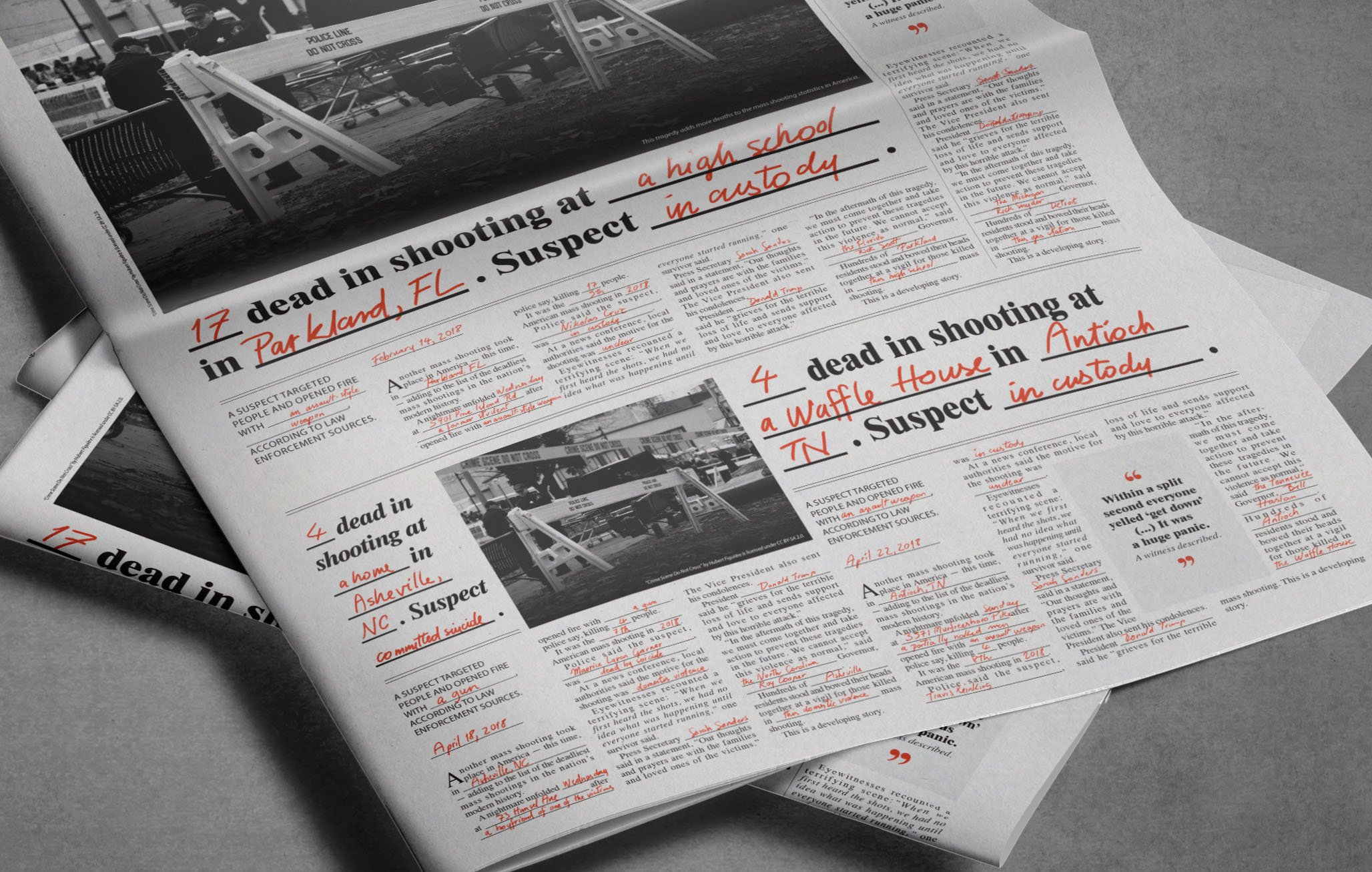Sign up for The Media Today, CJR’s daily newsletter.
Just over a month ago, CJR convened journalists from across the industry to talk about how to improve gun-violence coverage in the country.
Our April 6 summit, which you can watch here, included conversations with journalists from the New York Times, the Washington Post, The Trace, The Guardian and others to detail what was working, what wasn’t, and what we can do about it. For two hours, we hashed through what the news business can do to cover American gun violence like the public health crisis that it has become.
These are complex, nuanced questions, debated in our profession for decades. But the status quo isn’t working.
Below, you’ll see our findings from the summit, boiled down to six essential lessons. We’re calling it the CJR Gun Violence Coverage Commitment, and we’re hoping to convince newsrooms across the country to sign on.
Give us your feedback, your thoughts, your concerns. Better yet, sign on to the commitment, as we seek to change the coverage of this uniquely American plague.
1. We pledge to cover gun violence like the unfolding health crisis it is.
Gun violence in America is an epidemic, killing 100 people every day. Rather than cover it as a series of dramatic, but unrelated, news events, we will provide sustained, thorough coverage of the causes of gun violence, its effect on different communities, and the solutions seriously being considered to contain it.
2. We pledge to allocate the time and resources needed to cover this crisis.
Gun violence is a constant throughline of American life. It can impact any of us, at any time. But newspaper resourcing treats it like a rarity. We will re-prioritize gun violence in our newsrooms, carving out the appropriate time, staffing, education tools, and budget to make comprehensive gun violence coverage a reality.
3. We pledge to acknowledge and address racist coverage.
Coverage of gun violence in most American media ignores the disproportionate impact on communities of color; it treats shooters and victims differently, depending on their race; it foregrounds the narrative provided by law enforcement. We will put an end to this practice, including more often highlighting the voices of people in the communities most affected, and standardizing the terms and definitions used in our coverage.
4. We pledge to cover mass shootings as part of the larger gun violence problem.
Mass shootings represent a small percentage of gun deaths in the US but constitute a majority of the coverage. We acknowledge that dramatic, mass shooting events warrant attention. But they need to be covered as high-profile manifestations of a much larger, systemic problem, and made into an opportunity to educate the public on the thousands of people who are dying outside of the media spotlight.
5. We pledge to focus our resources on grassroots efforts.
It is true that many of the solutions to gun violence require national legislation. But local community organizations across the country are finding ways to address the problem at home. We will embed our reporters in these groups and with these community leaders, and profile their success stories.
6. We pledge to learn the lessons of the pandemic.
The American media largely did an effective job of uncovering the structural problems surfaced by the coronavirus, from inequities in health care and vaccine availability to the disproportionate illness rates in Black and brown communities. We will apply these lessons to gun coverage, focusing less on high-profile drama, and more on the underlying causes of this uniquely American tragedy.
Has America ever needed a media defender more than now? Help us by joining CJR today.



